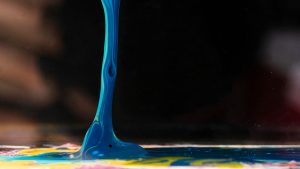There are several different types of stitches used in embroidery, each with its own unique appearance and purpose. Here are some of the most common types of embroidery stitches:
- Running Stitch: A basic stitch created by passing the needle and thread through the fabric in a straight line. It’s often used for outlining and creating simple shapes.
- Backstitch: Similar to the running stitch but with the needle passing back through the previous stitch, creating a solid line. It’s commonly used for outlining and adding fine details.
- Satin Stitch: A series of parallel stitches worked closely together to fill in an area with smooth, solid color. It’s ideal for creating solid shapes, letters, or filling in larger areas with color.
- Split Stitch: A stitch where the needle is passed up through the center of the previous stitch, splitting the thread. It creates a textured line that’s often used for outlining and adding detail to designs.
- French Knot: A small, decorative knot made by wrapping the thread around the needle several times before inserting it back into the fabric. French knots are commonly used for adding texture and detail to designs.
- Chain Stitch: A looped stitch where each stitch is connected to the previous one, forming a chain-like pattern. It’s versatile and can be used for outlining, filling, or creating decorative patterns.
- Lazy Daisy Stitch: Also known as the detached chain stitch, it’s made by creating a loop with the thread and securing it to the fabric with a single anchoring stitch. Lazy daisy stitches are often used for creating flower petals and leaves.
- Cross Stitch: A stitch formed by making two diagonal stitches that cross each other to create an “X” shape. Cross stitches are commonly used for creating intricate designs and patterns, such as borders, motifs, and decorative elements.
- Seed Stitch: A small, scattered stitch made by randomly placing individual stitches on the fabric surface. It creates a textured effect and is often used for filling in backgrounds or adding subtle detail.
- Long and Short Stitch (also known as Crewel Stitch): A combination of long and short stitches worked together to create shading and blending effects. It’s commonly used in crewel embroidery for creating realistic imagery and intricate designs.
These are just a few examples of the many stitch types used in embroidery. Each stitch offers unique characteristics and can be combined in various ways to create beautiful and detailed designs.





